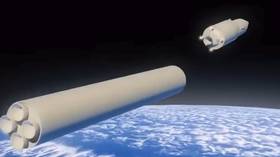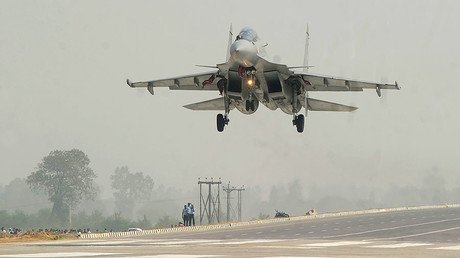America’s defenses no match for Russian hypersonic missiles – retired US general

A retired general and chief of staff has warned that the US’ missile defense systems are “simply incapable” of stopping the latest generation of Russian hypersonic missiles – some of which fly at 27 times the speed of sound.
Now retired, Maj. Gen. Howard ‘Dallas’ Thompson was once Chief of Staff at US Northern Command in Ohio. In a column published by The Hill on Thursday, Thompson argues that military leaders have neglected to develop proper defenses against the hypersonic threat.
There have been some calls for the US to pursue hypersonic weapons in defense policy circles, but America has lagged behind China – which conducted more tests in the last year than the US has is a decade – and Russia, which successfully tested such a missile in December. The ‘Avangard’ missile flew at Mach 27, and will be deployed in 2019.
At present, the US Missile Defense Agency’s sensors and radars are designed for one purpose: to counter an intercontinental ballistic missile (ICBM) fired by an adversary like Iran or North Korea. ICBMs have a predictable flight path, and the US’ Patriot and Terminal High-Altitude Area Defense (THAAD) batteries stand a reasonable chance of intercepting and destroying any incoming missiles.
Not so with hypersonics. Missiles like ‘Avangard’ fly low and fast, evading radar detection. They can also engage in evasive maneuvers to dodge surface-to-air rockets or missiles, further lowering the chances of a successful interception.
“The stark reality is that our current missile defense systems, as well as our operational mindset, are simply incapable versus this threat,” Thompson wrote. The retired General’s words are backed up by a recent report from the Government Accountability Office, which concluded that there are “no existing countermeasures” against the threat.
While the Pentagon plans to field hypersonic weapons by 2025, and has made some progress towards developing an interceptor to defend against them, Thompson claims that a massive collaborative program between the Department of Defense and arms companies is needed to counter Russian and Chinese advances.
“Countering this threat will require U.S. investment in an extensive defensive architecture,” he wrote. “...a highly robust ‘family of systems’ that nonetheless must be envisioned, designed, developed and deployed in a completely holistic manner.”
Until such a system can be developed, Russia is pulling ahead in the hypersonic race.
“We know for certain, it’s an obvious fact and our colleagues realize it, that we surpassed all our competitors in this area,” Russian President Vladimir Putin said last October. “Nobody has precise hypersonic weapons. Some plan to test theirs in 18 to 24 months. We have them in service already.”
Think your friends would be interested? Share this story!















